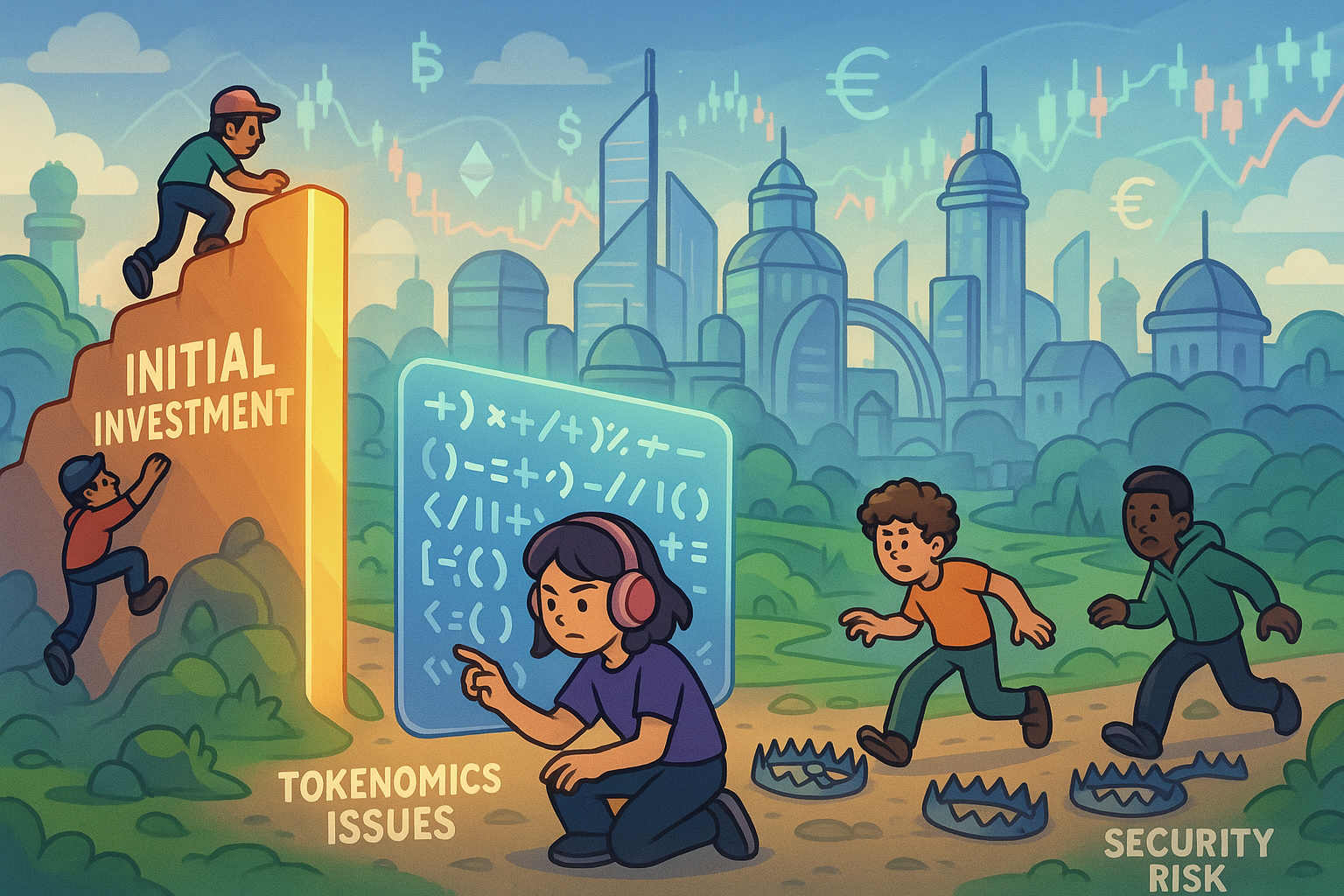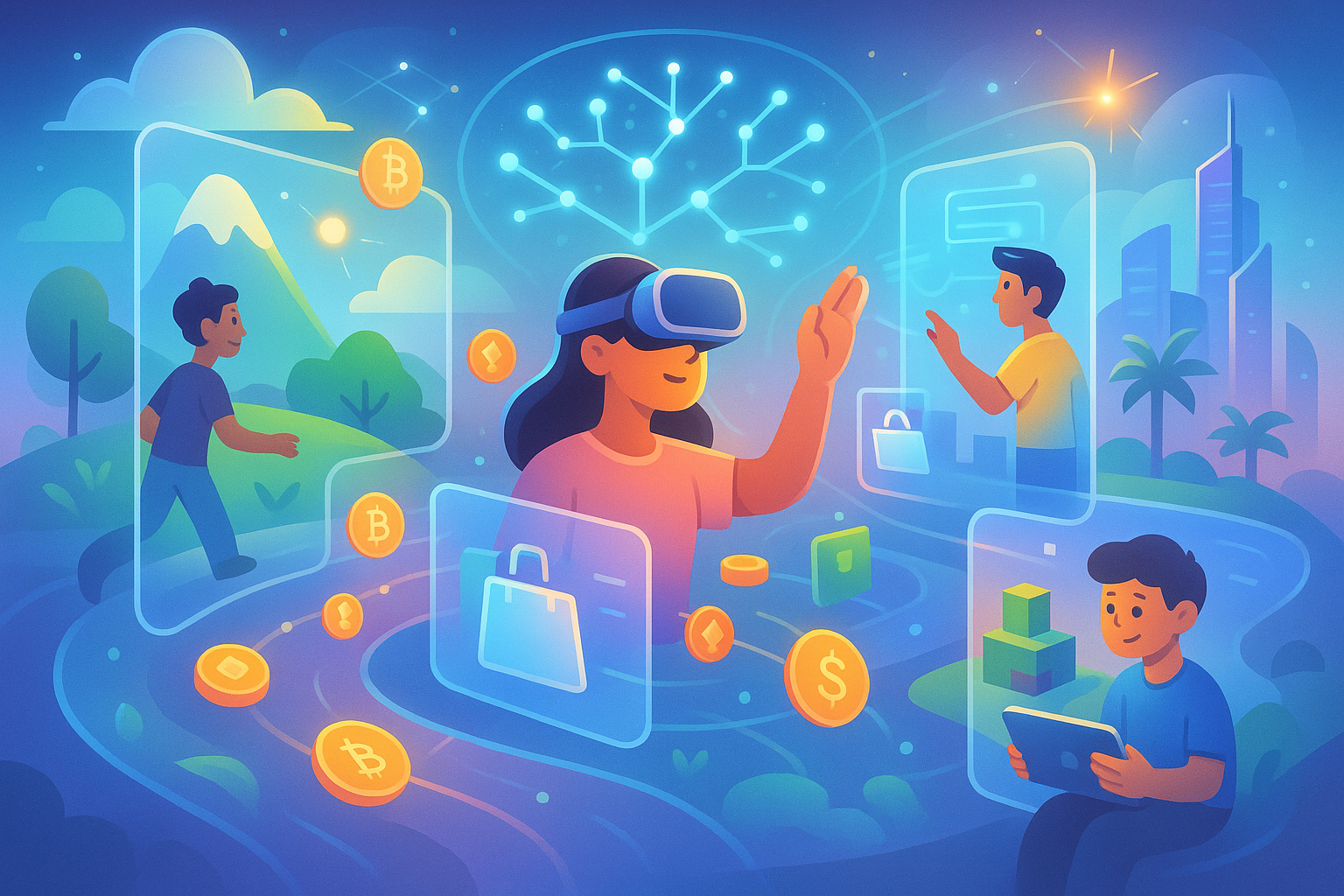The Evolution of Gaming: Why P2E is a Game-Changer
From the pixelated simplicity of Pong and the coin-operated magic of arcade cabinets to the breathtaking realism of modern console blockbusters and the boundless virtual worlds of PC gaming, the journey of interactive entertainment has been nothing short of spectacular. For decades, gaming has offered an unparalleled escape, a playground for imagination, and a vibrant community for millions. Yet, through all its technological leaps and narrative innovations, one fundamental aspect of the player's relationship with their digital domain remained largely unchanged: ownership. We invested countless hours, immense passion, and significant money into games, but what did we truly own?
For the longest time, the gaming ecosystem operated on a clear, albeit somewhat one-sided, model. Players purchased games, expansions, and cosmetic items, deriving immense entertainment in return. Developers poured their creativity and effort into crafting these experiences, retaining full control and ownership over every digital asset, every line of code, and every economic decision within their universes. Our high scores, meticulously customized characters, and rare in-game loot were ours only in a figurative sense; they resided on a server controlled by the game publisher, susceptible to their terms of service, server shutdowns, or even account bans. This system, while incredibly successful in fostering a multi-billion dollar industry, implicitly treated players as consumers, not as co-creators or genuine stakeholders.

The Dawn of Digital Ownership (But Not Quite)
The early 21st century saw the rise of downloadable content (DLC), microtransactions, and in-game marketplaces. Players could buy new characters, weapons, maps, or cosmetic skins. This was a step towards personalization and expanding game experiences, and it certainly allowed players to 'customize' their ownership of the digital experience. However, this was still a curated form of ownership. The items you bought were often tethered to a specific game, an account, and platform. You couldn't sell them on an open market, transfer them to another game, or truly treat them as your own digital property outside the publisher's walled garden. If the game's servers went offline, or your account was suspended, your "purchased" assets vanished into the digital ether. The value you injected into the game's economy ultimately enriched the publisher, with little to no direct financial return for the player, regardless of their dedication or skill.
Enter Web3: The Foundation for True Digital Property
The advent of blockchain technology, the underlying innovation behind cryptocurrencies and non-fungible tokens (NFTs), has begun to fundamentally challenge this traditional paradigm. Blockchain introduced the concept of verifiable digital scarcity and true digital ownership. For the first time, a digital item could be uniquely identified, its ownership undeniably recorded on a transparent, immutable ledger. This wasn't just a revolution for finance; it was a revolution for digital assets, and by extension, for gaming.
Non-fungible tokens (NFTs) are the key to this new era. Unlike a dollar bill or a Bitcoin, which are fungible (each unit is interchangeable with another), an NFT is unique. It can represent a single in-game sword, a character skin, a plot of virtual land, or even an entire game. When a player acquires an NFT, they don't just get a license to use an asset; they get the actual, verifiable digital deed to that asset. This shifts the power dynamic significantly, moving from a centralized publisher-owned model to a decentralized, player-owned model.

What Exactly is Play-to-Earn (P2E)?
Play-to-Earn (P2E) is more than just a buzzword; it's a revolutionary gaming model where players can earn real-world value through their engagement and contributions within a game. Unlike traditional games where value flows primarily from player to publisher, P2E creates a bidirectional flow, allowing players to capture some of the economic value they generate. This isn't about getting a salary for playing a game; it's about the verifiable ownership of in-game assets that have real-world market value.
In P2E games, players typically own their in-game assets as NFTs. These can be characters, pets, items, virtual land, or cosmetic enhancements. By playing the game, completing quests, winning battles, or participating in the game's economy, players can often earn cryptocurrency (the game's native token) or new NFTs. These earned assets can then be traded, sold, or even rented out on open marketplaces, allowing players to monetize their time, skill, and strategic decisions. For example, in some popular P2E games, players "breed" digital creatures, battle them, or complete daily quests to earn tokens, which they can then exchange for other cryptocurrencies or fiat money.
The Pillars of the P2E Revolution
The strength of P2E lies in several core principles:
- True Digital Ownership: As discussed, players own their assets as NFTs. This means these assets exist independently of the game's servers and can be transferred, sold, or held in a personal digital wallet. If a game's servers go down, the player's ownership of their assets remains verifiable on the blockchain.
- Verifiable Scarcity and Uniqueness: NFTs provide cryptographic proof of an asset's rarity and authenticity. This prevents counterfeiting and ensures that truly rare items maintain their value, much like real-world collectibles.
- Open Marketplaces: P2E assets can be freely traded on decentralized marketplaces, giving players control over their digital wealth and fostering a player-driven economy. This contrasts sharply with traditional games where publishers dictate the terms of any internal marketplace.
- Interoperability (The Future Dream): While still in its nascent stages, the vision for many P2E games is to create assets that can be used across multiple games or metaverses. Imagine a sword you earn in one fantasy RPG being usable as a cosmetic item in a different virtual world. This cross-game utility could unlock immense value and creativity.
- Player Governance (DAOs): Many P2E projects are evolving towards decentralized autonomous organizations (DAOs), where players who hold the game's native token or specific NFTs can vote on key decisions about the game's future, economic parameters, and development roadmap. This truly empowers players, giving them a voice and a stake in the ecosystem they help build.

Benefits for the Player and the Gaming Landscape
The emergence of P2E offers compelling advantages:
- Economic Empowerment: Players can earn income from their time and skill, potentially turning a hobby into a source of supplemental income or even a full-time profession for some. This is particularly impactful in regions with lower average incomes.
- True Digital Wealth: The value generated within games no longer solely accrues to the developers. Players accumulate assets that are genuinely theirs, fostering a sense of ownership and investment in the game's success.
- Community and Investment: When players have a financial stake, their engagement deepens. They become more invested in the game's longevity and actively participate in its community, often contributing to its growth and stability.
- New Career Paths: P2E has given rise to new roles like "scholars" (players who borrow NFTs from owners to play and earn a share of the profits) and NFT traders specializing in in-game assets.
- Innovation and Creativity: The open nature of blockchain and NFTs encourages developers to experiment with new economic models and gameplay loops, potentially leading to novel gaming experiences that were previously unfeasible.
Challenges and Criticisms: A Maturing Model
While the promise of P2E is vast, it's essential to acknowledge the significant challenges and criticisms it faces:
- Sustainability and Tokenomics: Many early P2E games struggled with unsustainable economic models, leading to token price crashes and a perception of "Ponzi schemes." The challenge is to design robust tokenomics that reward players without relying solely on a constant influx of new users.
- Focus on Earning over Fun: A major critique is that the "earn" aspect can overshadow the "play," turning games into a chore or a job rather than an enjoyable pastime. The ideal P2E game should first and foremost be fun and engaging.
- High Barrier to Entry: Many P2E games require an initial investment to purchase NFTs to start playing, which can be a significant hurdle for new players, especially in a volatile crypto market.
- Security Risks and Scams: The Web3 space is still prone to scams, wallet hacks, and smart contract vulnerabilities. Players need to be vigilant and educated to protect their digital assets.
- Regulatory Uncertainty: Governments worldwide are still grappling with how to regulate cryptocurrencies and NFTs, creating an uncertain legal landscape for P2E games.
- User Experience Complexity: Setting up crypto wallets, understanding gas fees, and navigating decentralized marketplaces can be daunting for mainstream gamers accustomed to seamless traditional gaming experiences.

The Future of Gaming: Beyond Pure P2E
Recognizing these challenges, the P2E space is rapidly evolving. The conversation is shifting from purely "Play-to-Earn" to broader concepts like "Play-and-Own," "Play-and-Earn," or even "Play-Create-Own-Earn." This signifies a move towards integrating true digital ownership and economic opportunities more seamlessly within genuinely fun and engaging gameplay experiences, without the explicit pressure to earn. Future models are likely to be more hybrid, combining elements of traditional gaming with the benefits of Web3.
Mainstream adoption will likely come when major AAA studios integrate Web3 elements in a way that enhances gameplay and player experience, rather than just serving as a financial incentive. We're already seeing interest from traditional publishers, cautiously exploring NFTs and blockchain technology. The metaverse concept, where persistent virtual worlds are interconnected, further amplifies the potential of P2E, as interoperable assets become more meaningful and valuable in a broader digital ecosystem. Imagine owning a unique virtual outfit that you can wear across different games, social platforms, and virtual concerts.
Furthermore, the integration of AI, augmented reality (AR), and virtual reality (VR) with blockchain technology could unlock even more immersive and economically vibrant P2E experiences, blending the physical and digital worlds in unprecedented ways. The lines between 'gaming' and 'digital economy' will continue to blur, transforming players from mere consumers into active participants and stakeholders in evolving digital economies.

A Paradigm Shift
The evolution of gaming has always been driven by technological advancement and a constant pursuit of more engaging, immersive experiences. Play-to-Earn, powered by blockchain and NFTs, represents the next significant leap, not just in technology, but in philosophy. It's a paradigm shift that redefines the relationship between players and games, moving towards a future where players are not just consumers of content but owners of digital property, active participants in game economies, and even co-creators in the ongoing development of their favorite virtual worlds. While the journey is still unfolding, fraught with challenges and learning curves, the core promise of P2E – empowering players with true ownership and economic agency – positions it as a genuine game-changer, shaping the future of interactive entertainment for decades to come.

